Brenda Wineapple on Abraham Lincoln and Frederick Douglass
Two recent books show how a man of reason and conservative temperament and a man of passion and radical disposition joined together, even before either knew it, to end slavery.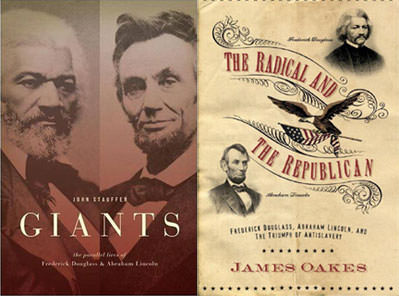
Are you ready for Lincoln? With the bicentennial of his birth in sight — to say nothing of last Tuesday’s historic inauguration of President Barack Obama, who happened to launch his presidential campaign from Springfield, Ill. — new books about the 16th president, never in short supply, have been coming down the pike: Lincoln as emancipator, as passive pragmatist (the David Herbert Donald view), as melancholic, as homosexual, as husband, as racist, as Jacksonian, as Jeffersonian, as lawyer, as reader and canonical writer (a fine new book by Fred Kaplan), as reconsidered (the recent, excellent volume edited by Eric Foner), as containing multitudes (George Frederickson’s posthumous insight), and as brilliant commander in chief (the latest contribution of James McPherson). And that’s not all: Still coming are books on Lincoln in 1864 and Lincoln and his Cabinet secretaries and Lincoln and his admirals and Lincoln and Darwin (from the elegant pen of Adam Gopnik) and Lincoln and the Todds, as well as “Mary Todd Lincoln,” by Catherine Clinton, and “The Lincoln Anthology: Great Writers on His Life and Legacy,” edited by eminent Lincoln scholar Harold Holzer and published by the Library of America. In addition, a magisterial new biography, “A. Lincoln,” by the eloquent Ronald C. White Jr., will attempt to meld these Lincolns into a whole.
The Radical and the Republican
By James Oakes
W. W. Norton, 352 pages
Giants: The Parallel Lives of Frederick Douglass and Abraham Lincoln
By John Stauffer
Twelve, 448 pages
Most of these perspectives are interesting, some genuinely illuminating, and taken together suggest that the smiling aspects of American life, as novelist William Dean Howells, himself a Lincoln biographer, once infelicitously said, are not the most American after all: Lincoln presided over a bloodfest in which at least 620,000 men (2 percent of the population) died in uniform, often in unspeakable ways, as recently documented in Drew Gilpin Faust’s heartrending “This Republic of Suffering.” But as Howells also said, Americans like their tragedies to have happy endings, and Lincoln managed to do what other statesmen, abolitionists, preachers, insurrectionists, writers and people of good will could not: get rid, once and for all, of the barbaric business of slavery.
Did he do it alone? Of late, a methodical and centrist Lincoln has been placed next to Frederick Douglass, a man of very dissimilar character and outlook, to salutary effect. Significantly complementing one another in the struggle to end slavery, these two unusual men, a revolutionary black leader and a reluctant liberator, came to share a goal, or so Paul and Stephen Kendrick contend in their dual biography, “Douglass and Lincoln.” To them, Lincoln’s straightforward intention was first and foremost to save the Union and preserve the status quo while putting slavery “in course of ultimate extinction”; Douglass, by contrast, insisted on abolition, immediately and unequivocally, though he zigged and zagged about the best way to secure it, tacking from Garrisonian nonpolitical nonviolence to an allegiance with the Free Soilers to a flirtation with John Brown before re-embracing politics as a means for accomplishing his ends.
The various means Lincoln and Douglass proposed to eliminate slavery and their eventual agreement are the subject of historian James Oakes’ perceptive “The Radical and the Republican: Frederick Douglass, Abraham Lincoln, and the Triumph of Antislavery Politics.” Explaining that his book is not a biography or a study of lives and times but rather “a close reading of the things Lincoln and Douglass had to say about slavery and race, about politics, and war, and about each other,” Oakes, a pellucid writer, avoids the unnecessary clutter of biographical detail without shortchanging his subjects’ singular early lives or the impact that slavery and poverty, to name just two salient elements, had on their thinking. Moreover, Oakes, Distinguished Professor of History at City University of New York, begins his book with a series of seemingly basic questions: “Here are two men whose historical reputations rest chiefly on their mutual hatred of slavery. Why did it take so long for them to appreciate each other? What kept them apart, and what eventually drew them together?”
According to Oakes, the simple answer (and simple answers are, to him, never that simple) is that though Lincoln was a practical and even conservative politician and Douglass a radical reformer, their essential dedication to equal rights actually linked the men long before either of them knew it. Plus, Lincoln and Douglass were both performers; they manufactured their own images (voice of moderation/aggrieved citizen; man of reason/man of passion; conservative/radical) to fit the moment, which just happened to be a national crisis. And “seen together,” Oakes declares, Lincoln and Douglass “reveal what can happen in American democracy when progressive reformers and savvy politicians make common cause.”
Lincoln slowly formulated his political identity out of the ashes of the Whig Party to emerge as one of the most eloquent anti-slavery politicians of the day — the “day” being 1854, when the Kansas-Nebraska Act effectively repealed the Missouri Compromise to allow the extension of slavery into free territories, and the day also being 1857, when the Supreme Court’s Dred Scott decision denied citizenship to blacks and declared unconstitutional any attempt to prohibit the spread of slavery. But if Lincoln seemed to share the white supremacist beliefs of most Republicans, clinging, for example, to the ridiculous idea of colonizing free blacks in Liberia or Central America, he abjured the racist rhetoric employed by Democrats like Stephen Douglas. That was not enough. To Frederick Douglass, Lincoln’s defense of black freedom was tardy, cold and indifferent. Moreover, Douglass came to believe that slavery violated the tenets of both the Constitution and the Declaration of Independence since it abrogated natural law and justice; to him, the Constitution, strictly construed, could be interpreted as an anti-slavery document, the Founding Fathers’ intentions notwithstanding. Lincoln too believed that slavery violated the principle of human equality on which the Declaration was founded, but he read the Constitution as an instrument whose necessary concession to slave owners had made the nation possible, no small thing. Yet though the Constitution compelled the protection of slavery where it existed, the document said nothing about restricting its expansion, a restriction that Lincoln assumed would (and should) hasten its eventual demise. Lincoln thus initially intended not to end slavery per se but to restore what he thought was a consensus about its fundamental wrongness so that it could in due time disappear. “There is something almost willfully naive,” writes Oakes, “in his vision of American history.”
The Radical and the Republican
By James Oakes
W. W. Norton, 352 pages
Giants: The Parallel Lives of Frederick Douglass and Abraham Lincoln
By John Stauffer
Twelve, 448 pages
One of the highlights of Oakes’ intelligent book is the way he separates the issue of slavery from the issue of race to suggest how Lincoln’s plan of gradual emancipation included what Oakes calls a “strategic racism” — that is, Lincoln pandered to racists to put a Republican majority in Congress and himself in the White House. “He accepted racial discrimination because that was what most whites wanted,” Oakes argues. “If this position earns a place in the catalog of political villainies, it comes under the heading of spinelessness, not racism.” Douglass was not so sure. But by comparing Douglass with Lincoln, Oakes does not dismiss Lincoln’s belated support for abolition as the pragmatic maneuvering of a master politician but rather renders it ethically and historically complex, for Douglass stood fast and courageously for emancipation, the enlistment of black troops and equal rights. As John Stauffer colloquially puts it, “Douglass knew that speaking truth to power could change the world.”
With its publication date on Election Day and its epigraph from Barack Obama’s “Audacity of Hope,” Stauffer’s “Giants: The Parallel Lives of Frederick Douglass and Abraham Lincoln” tried to jump the gun on the Lincoln extravaganza (an impossibility) by highlighting the obvious Lincoln/Obama connection. Calling “Giants” a “collective biography” about two men whose “inner turmoil” reflects the national scene and at the same time “provide[s] a roadmap for the changing political landscape,” Stauffer, a professor of English and African-American studies at Harvard, dramatizes Douglass’ 1863 meeting with Lincoln, when colonization, segregation, the treatment of black troops and the murderous riots in New York against conscription “may have been on Lincoln’s mind when his doorman told him that Frederick Douglass had just sent up his card.” Narrating the encounter in novelistic fashion, Stauffer claims that when Douglass left the president, he assumed he’d found an ally in the fight against slavery, mainly because they “shared strangely similar backgrounds”: Both had been poor boys, and though one, black, was born into slavery, they each loved Shakespeare and the Bible and Byron and Aesop’s “Fables”; they did not smoke or drink; they were fantastic orators and clear-eyed logicians, they were tall, and they were quintessentially self-made men, which is one of Stauffer’s major themes.
The 19th century was of course the century of the self-made. As James Oakes reminds us, the notion of the self-made was at the moral heart of Lincoln’s political philosophy, for it meant the “right to rise” in this world, to achieve or make something from nothing, and, significantly, to keep and enjoy the fruits of one’s labor. And as Stauffer aptly observes, most Northerners also believed that access to new land “was a prerequisite to self-making and economic growth.” Slavery threatened that. In fact, in most significant matters, Stauffer agrees with Oakes though he often adds into the mix the element of psychodrama that biography sometimes seems to inspire. For instance, following the lead of C.A. Tripp’s “The Intimate World of Abraham Lincoln,” Stauffer names Joshua Speed as the love of Lincoln’s life and re-enacts their first meeting, after which, Stauffer says, the “two men became bedfellows.” Then, by detouring into the relationship of Melville’s Ishmael and Queequeg to expatiate on the erotic component of male friendship in the 19th century, Stauffer devotes several more pages to musings about Lincoln’s powerful libido before he marries Lincoln off to Mary Todd while admitting, almost ruefully, that “one would like to think that at the wedding Lincoln was thinking of him [Speed.]” Yet whatever Lincoln was thinking, after his wedding his political career — now “fueled and lubricated” by Mary, as Stauffer writes in deadpan fashion — flourishes. “If he [Lincoln] could not always control his sexual passions,” Stauffer writes in segueing back to public affairs, “neither could he contain his zeal for Whig politics.”
In his superb “The Black Hearts of Men: Radical Abolitionists and the Transformation of Race” (2002), professor Stauffer steers clears of costume drama. Perhaps the main difference between this book and “Giants” is one of method. “Black Hearts,” like Oakes’ “The Radical and the Republican,” examines person in relation to idea, never letting one drift far from the other, but in “Giants” he includes unsubstantiated or irrelevant detail — and fantasy. “Launching a paper felt a bit like arriving in New York City fresh from slavery,” Stauffer writes in the second person, as if to channel Douglass. “You lived on hope and adrenaline.” However, his account of Douglass’ miserable marriage is poignant; so too his discussion of the German woman, Ottilie Assing, one of the educated white women with whom Douglass maintained a long-term friendship and maybe something more. What this reveals in terms of Douglass’ attitude toward war or race or ethnicity (Assing was half-Jewish) is however too quickly summarized; “Douglass saw a close correlation between family and nation and opposed disunion and divorce,” Stauffer concludes. Though breaking no new ground, Stauffer deftly and reliably documents Douglass’ fury at Lincoln’s refusal to proclaim complete emancipation of all slaves once war had begun. Lincoln wanted to appease the border states, insisting that without them the North would lose the war and the slaves their chance for freedom. Douglass impatiently disagreed. As Oakes shrewdly points out, Douglass and Lincoln “shared flip sides of the same delusion. Lincoln hoped that if the border states abolished slavery on their own, the Confederacy would throw up its hands in defeat. Douglass hoped the same thing would happen if the federal government declared slavery abolished in the border states.”
The Radical and the Republican
By James Oakes
W. W. Norton, 352 pages
Giants: The Parallel Lives of Frederick Douglass and Abraham Lincoln
By John Stauffer
Twelve, 448 pages
Both Lincoln and Douglass also shared a talent for subterfuge, and each readily used the other to his own purposes. Sometimes, it suited Lincoln to have Douglass attack him, and doubtless it suited Douglass too when he let it be known how much he despised the president. Though Stauffer notes that with the signing of the Emancipation Proclamation, Douglass changed his attitude toward Lincoln from one of harsh skepticism to profound admiration, it was only after their second meeting, which took place in the summer of 1864, as Stauffer comments, that the president “had shown him the respect of one self-made man to another.” More than that, Douglass presumably left that meeting certain for the very first time that Lincoln possessed “a deeper moral conviction against slavery than I had ever seen before in anything spoken or written by him.” Lincoln would not compromise with slaveholders. And if he had moved too slowly to end slavery at the outset of the war, he at least now stood squarely and unswervingly for emancipation.
Lincoln had barely a year left to live, Douglass another 30, which Stauffer condenses in a brief epilogue; the days of Douglass’ “continual self-making” were over. “I felt I had reached the end of the noblest and best part of my life,” Douglass elegiacally wrote. “My school was broken up, my church disbanded, and the beloved congregation dispersed, never to come together again.” Still, in 1888, Douglass was protesting Jim Crow and lynching and voter registration fraud, mob violence and disfranchisement. And he remembered Lincoln, whom he refashioned for rhetorical purposes, in his own image, as radical reformer. So we too, today, continue to remake him.
Brenda Wineapple’s most recent book is “White Heat: The Friendship of Emily Dickinson and Thomas Wentworth Higginson” (Knopf).
Your support matters…Independent journalism is under threat and overshadowed by heavily funded mainstream media.
You can help level the playing field. Become a member.
Your tax-deductible contribution keeps us digging beneath the headlines to give you thought-provoking, investigative reporting and analysis that unearths what's really happening- without compromise.
Give today to support our courageous, independent journalists.



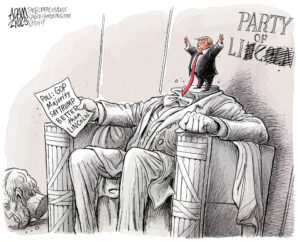
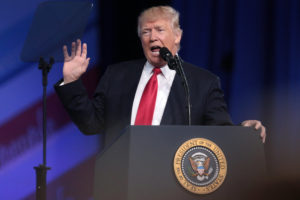
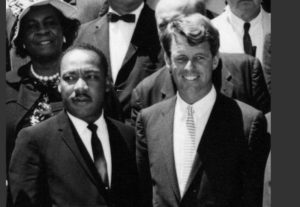
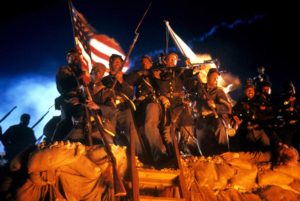
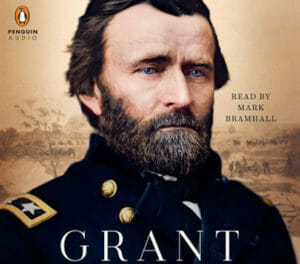
You need to be a supporter to comment.
There are currently no responses to this article.
Be the first to respond.